- Home
- David Pilling
The Growth Delusion Page 17
The Growth Delusion Read online
Page 17
Adding as well as subtracting ought not to be beyond the wit of anyone—least of all economists. But there is another, more philosophical, problem with the future. Why should we care about it? After all, in the end not only are we going to die, but our universe is going to die too. It will turn into a zero-energy soup. In the very long run our current assets are worth precisely nothing.20 Put a different way, one can love one’s children and one’s children’s children, even if they have not yet been born. But what about their children and their children after that, indefinitely into the future? Humans can happily go about their business while wars and famine rage a few thousand miles away. Can we really expect them to act now to avoid something in another time dimension for the benefit of the as-yet-unborn, even if they are ever-so-distantly related to us? Philosophically, let alone economically, it is a practically unanswerable question.
* * *
—
So far we have talked mainly about natural capital. But there have been attempts by no less august a body than the World Bank to come up with what it calls the “comprehensive wealth” of nations, a measure not only of natural capital but also of physical and institutional capital. Since the mid-1990s the Washington-based organization has had a small team (to be fair a very small team) dedicated to the task. The team’s guiding principle appears in the foreword of one of its big reports: “How we measure development will drive how we do development.”21
One of the report’s findings is that as countries become richer, the importance of natural capital diminishes. That is because nations convert the income stream they gain from exploiting natural resources—say by selling bananas or oil or uranium—into other types of capital, say roads or universities or robots to produce cars. At least that’s the idea. Nigeria, sub-Saharan Africa’s most important oil exporter, started attracting serious investor attention from the mid-1990s, when its oil exports were earning it handsome rewards. As the World Bank report points out, from a growth perspective Nigeria was doing brilliantly. But from a wealth perspective, it was going backward. Its elites were stealing or squandering its future by failing to convert income into physical or human capital. The way we measure things cannot stop unscrupulous leaders from selling off a nation’s patrimony. But it can shine a clearer light on what is happening. If headlines about Nigeria had read NIGERIA’S WEALTH PLUMMETS and not NIGERIA’S GROWTH SOARS, the government might have come under pressure to change course.
For produced—or physical—capital, the World Bank uses, where able, numbers collected by national statistics agencies. Some thirty national governments compile comprehensive data on capital stock: factories, roads, sewerage systems, and so on. These are given virtually no publicity, but the numbers do exist. For the rest, the bank relies on data compiled for 150 countries by a group at the University of Groningen in the Netherlands.22
* * *
—
When it comes to natural capital, the World Bank takes a more down-to-earth approach than Costanza. Instead of trying to value whole ecosystems, it confines itself to valuing agricultural land, forest land, and subsoil resources such as oil, coal, bauxite, and gold. Very broadly, it calculates the value of farmland at a commercial rate: how much would it cost to buy a wheat farm in Australia or an orange grove in Spain? For subsoil assets, it restricts its valuation to four energy sources and ten major minerals for which there is comprehensive market data on price and reserves.23 Forest land is valued not for its beauty or capacity to absorb carbon, but, more prosaically, according to the amount it would fetch if all the trees were chopped down and sold as timber.24
The services that nature provides—for example, the value of pollinators such as bees—are assumed to be counted in the cost of the land. Even important minerals such as diamonds, uranium, and lithium, and marine resources such as fish, are not counted because of a lack of definitive data. Water is not counted as an energy source, even though hydropower is hugely important from China to Ethiopia. Protected areas such as Yellowstone National Park or Tanzania’s Serengeti are not valued according to their natural beauty or genetic diversity, but rather by the cash they would fetch if they were sold off as farmland. The bank’s estimates are a gross underestimate of the true “value” of nature.
An interesting aspect of the bank’s wealth report is the very high value it attaches to “intangible capital” such as an educated workforce and functioning institutions. In rich countries, for example, it finds that natural capital contributes only 2 percent to total wealth, compared with a whopping 81 percent for intangible capital. Produced capital makes up the remaining 17 percent.25
So how, exactly, is intangible capital calculated? Frustratingly, the answer is that it isn’t. It appears as a “residual,” which in layman’s terms means an error. One can’t help raising a skeptical eyebrow when 81 percent of what we’re trying to measure turns out to be a mistake. Without going into detail, the World Bank basically works backward by calculating how much capital we must have to produce so much income. Having taken into account natural capital and physical capital, the missing amount must be institutional capital. It is a little like the assumptions scientists make about dark matter.
If you remember the parable of the two islands, one where people trust each other (and trade) and one where they don’t (and don’t), then attributing a large portion of income to institutional capacity is not ridiculous. Still, the bank’s numbers seem implausibly high in comparison to natural capital. For the record, here are the numbers for total wealth in trillions of dollars, with the breakdown expressed in percentages.26
Figure 3
This chart provokes a few observations. As noted above, the contribution of natural capital to total wealth in rich countries is just 2 percent. Even in poor countries, many of which have little manufacturing, it accounts for only 30 percent of total wealth. Of the world’s total wealth of $674 trillion, just 5 percent is attributed to natural capital, while 77 percent is supposedly made up of the intangible elements of human, institutional, and social capital.
Second, each percentage in the chart carries the same weight. Thus theoretically any country would do well by converting its natural capital into other forms of capital: oil and gas into roads; and schools and wheat and salmon into universities and well-run courtrooms. And that is exactly what the bank says a country should do on its journey from underdeveloped to developed status. But there is an obvious problem. If every country took this advice literally, there would be no nature left. The planet would be denuded of natural capital and everything on it would be dead. A country could pollute itself out of existence and drive its animal and plant life to extinction without its actions showing up as a problem in these wealth accounts. The bank acknowledges the problem, which stems from the fact that it assumes one form of capital converts seamlessly into another, something it calls substitutability. (In economics as in other disciplines, long words are more often than not a cause for alarm.) But this fails to highlight the “possible irreversibilities and catastrophic events” that might ensue. For a measure that is supposed to emphasize sustainability, this is more than a minor kink in the methodology.
The third point is more of a curiosity. The World Bank’s method of counting natural capital is based on the market price of minerals, farmland, and so on. It is entirely different from the way Robert Costanza set about the same problem in his Nature paper. He tried to price entire ecosystems right down to the value to humans of a landscape’s recreational and spiritual benefits. The bank sticks to oil and gold and cows and potatoes but still finds that natural capital makes up 5 percent of the world’s total wealth of $674 trillion. That puts natural capital at $33.7 trillion, within a whisker of Costanza’s $33.3 trillion. It is pure coincidence. But for such wildly different approaches, you’ve got to admit, it’s a bit spooky.
* * *
—
Clearly wealth accounting has some way to go. Th
ere are many conceptual and ideological problems. Besides, economists have only so much to say on such matters. In fact, they have already gained too much authority over our decision-making processes. It has become a given that nothing can be done if it harms the economy—something that only a priesthood of economists can determine. If “taking back control” has become a mantra of our times, then wresting back public policy from the sole oversight of economists must be part of the solution. Paradoxically, sometimes when you put theory to one side and actually take practical measures to deal with some of these issues, things can become clearer. Take the example of Norway.
Knut Ole Viken is a Norwegian tree counter.27 He has been counting trees for nearly three decades, first as a child with his father in remote woodlands close to the Arctic Circle and now as part of a long-term assessment of the country’s forests by the Norwegian Institute of Bioeconomy Research. In what is a five-year cycle, a team of forest experts including Viken sets out to examine trees the breadth and considerable length of Norway at 15,000 separate locations. Forests and wooded land cover nearly 40 percent of Norway’s territory, including the wintry north of the country.28 When the five-year exercise ends, it is time to start again. Counting Norwegian trees is a never-ending task.
The business of tree counting began nearly a hundred years ago, in 1919. It was then that the Norwegian government decided it had to take action. For much of the previous century the country’s once-ubiquitous forests had been rampantly exploited. Much of the old-growth forest had been logged and shipped off to Europe. “Locally, farmers were using firewood to warm their houses and the grazing from their animals prevented forests from recovering,” Viken told the BBC. “There was no program for planting or regeneration.”
The plan to conduct a complete inventory of Norway’s forests was the first of its kind in the world. Other European countries had done piecemeal assessments but none had attempted what Norway was proposing. Norway’s National Forest Inventory proved a turning point. It enabled the government to gain a clear picture of which forest areas had been denuded, which were still thriving, and where the greatest biodiversity still existed. From there it could begin to make sensible decisions about which areas could be safely logged and which needed protecting to ensure wildlife habitat and the preservation of at least some old-growth areas.
Today Norway has nearly three times the amount of standing wood it had a hundred years ago. To be precise it has 823 million cubed meters of growing forest, of which 8 to 11 million cubed meters is logged each year. Since the forest is growing at about twice that rate, Norway is adding to its stock of forest land all the time. It has enough trees to absorb nearly 60 percent of its greenhouse emissions. Of course things are not perfect. Only 4 percent of its forests are pristine, with much of the rest consisting of relatively new-growth trees planted for commercial logging. In the nineteenth century swaths of the country’s ancient forests were destroyed, shrinking biodiversity. Still, Norway’s forest inventory was a pioneering idea. It is the kind of thinking that has made the country more effective at guarding its natural resources than almost anywhere else on earth.
Just two days before Christmas 1969 Phillips Petroleum informed the Norwegian government that it had discovered a huge oil field on the country’s North Sea continental shelf. This was the first of several big finds that was to make Norway one of the world’s top oil producers for decades to come. For the first twenty years, Oslo reinvested its growing oil revenues back into the oil industry itself and spent money on developing the country. But by the early 1990s, with oil revenues surpassing all expectations and forecast to continue for decades more, the government started planning for the future. It set up the Petroleum Fund of Norway, a sovereign wealth fund to hold savings for future generations.
In 1996 the first oil money was transferred to the fund. Just twenty years later, what is more commonly known as the Oil Fund has become the biggest of its kind in the world, with holdings of around $875 billion.29 It invests what it likes to call “the people’s money” in three classes of assets—equity, bonds, and property, all outside Norway. Today the fund has stakes in some 8,000 international companies from Apple to Nestlé and controls around 1 percent of all shares listed on global stock markets. It also invests tens of billions in government debt and has built up a large real-estate portfolio. Among its dozens of property holdings are part of Regent Street in London and buildings on New York’s Fifth Avenue and in Times Square. In Partha Dasgupta’s terms, Norway has run down one form of capital (oil beneath the seabed) and converted it into another form (money in the bank for future generations).
It all sounds so easy. But Norway is an exception. Many countries, especially ones in the developing world with weak institutions, fall prey to the so-called resource curse. Instead of using revenue to build the country’s future, they scramble to spend it as fast as possible. What should be a once-in-a-lifetime chance to improve a country’s prospects becomes what economists call a rent-seeking opportunity, with those in power and their hangers-on scrambling to make a quick buck.
This applies not only to developing countries. Even the UK, a nation with generally well-functioning institutions, can be accused of squandering its oil revenues. Like Norway, Britain benefited from the vast quantities of petroleum discovered in the North Sea. But unlike Norway, it simply spent the money. From the 1970s to today, oil companies paid around £330 billion in taxes to the UK Treasury. Existing generations benefited from these windfall revenues in the form of current expenditure, higher investment—some of it at least presumably on lasting and beneficial assets—and lower taxes. But no explicit provision was made for future generations. There is no UK Oil Fund. Indeed, as oil reserves began to run down from around 2010, it became clear that the industry would become a drain on the Treasury. Instead of receiving money, the government has promised to subsidize companies to decommission exhausted oil fields.
If oil is money in nature’s savings vault, the Bank of the North Sea is about to go bust.
12
THE LORD OF HAPPINESS
A common way economists determine how much something is worth is by applying what is known as the willingness to pay principle. How much would someone be willing to pay for a tangible thing, such as a plastic Pez dispenser, or an intangible one, say an unpolluted bay or more time off work? How much, for example, is the head of Jeremy Bentham, the great English philosopher who died in 1832, worth? This book is chock-full of skepticism about the value we attach to certain things and about the difficulty of pricing things we really should be measuring, like pollution, housework, and nature. Here, at last, is a simple question with a simple answer. Jeremy Bentham’s head is worth ten pounds.1
We know this for a fact because, when students took his head hostage in 1975, University College London, to whom it belonged, agreed to pay ten pounds for its return. The offer was accepted. In economics that’s about as near to a slam dunk as you’re ever likely to get.
How Bentham’s head ended up in the possession of UCL is a curious tale. Toward the end of his life, Bentham, who devoted much of his career to writing about what made people happy, got it into his ten-pound head that his body needed to be preserved after death. So gripped was he by this notion that for the last decade of his life he apparently carried two glass eyes with him in his pocket at all times so that embalmers would have something to fix in his eye sockets if the need suddenly arose. In his will he asked that his skeleton be mummified, then dressed in a black suit and preserved as an “auto-icon,” sitting upright in a glass case. For a philosopher closely associated with the idea of what makes you happy, I suppose the only appropriate response to his final wish is “Whatever floats your boat.”
Bentham’s body is indeed kept today in a glass-fronted case in a hall in the South Cloisters of UCL. In line with his wishes, he is occasionally taken, sans case, to attend meetings, such as the one he presided over in 2013 for the fin
al council meeting of the then provost.2 (The minutes note that he was in attendance but did not vote.) Unfortunately for Bentham, his head is no longer with him. When he died, aged eighty-four, the embalming was botched and the head replaced with a wax replica. The original was kept in the cabinet, from where it was stolen in 1975 by prankster students raising money for charity. It is now stored separately for safekeeping.
In truth, this chapter has less to do with how much Bentham’s head is worth than what was inside his cranium. Was he happy or was he sad? How should we interpret his ideas on human happiness today? More precisely, the subject at hand is the feasibility of measuring happiness at all and whether it is a worthwhile enterprise.
In economics the happiness discussion has been unhelpfully hijacked by Bhutan and that small, mountainous country’s promotion of what it calls gross national happiness. Mention measuring happiness to some people and they’ll look at you with a slightly knowing look and say, “What, like Bhutan?” I’ll deal with Bhutan later, but the more interesting discussion on happiness has to do with attempts in the great universities of America and Europe to measure it.
Ever since 1974, when Richard Easterlin, an economics professor at the University of Pennsylvania, wrote his landmark paper “Does Economic Growth Improve the Human Lot?,” researchers have drawn on psychology, neuroscience, economics, and sociology to probe the mysteries of happiness. Easterlin set the ball rolling by questioning the link between income and happiness, arguing that, once a certain level of prosperity had been achieved, additional income furnished no further joy. That was a radical idea because it undermined the notion that the maximization of growth—which had become the overriding policy goal of governments—was the best way to improve well-being.

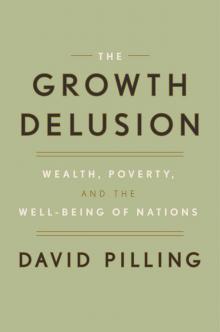 The Growth Delusion
The Growth Delusion The Hooded Men
The Hooded Men Longsword
Longsword Medraut
Medraut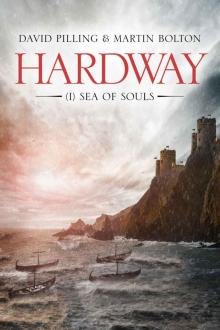 Hardway
Hardway Holy Warrior
Holy Warrior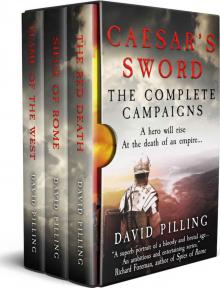 Caesar's Sword: The Complete Campaigns
Caesar's Sword: The Complete Campaigns The Wolf Cub
The Wolf Cub Reiver
Reiver The Heretic
The Heretic Siege of Rome
Siege of Rome Loyalty
Loyalty The Path of Sorrow
The Path of Sorrow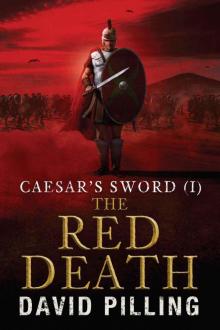 Caesar's Sword (I): The Red Death
Caesar's Sword (I): The Red Death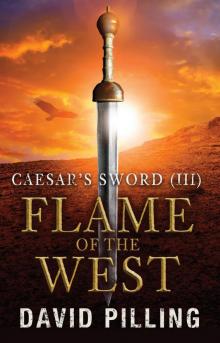 Flame of the West
Flame of the West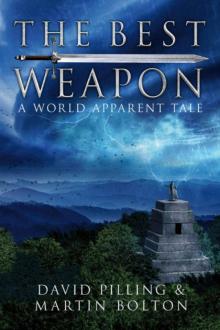 The Best Weapon
The Best Weapon Sacrifice
Sacrifice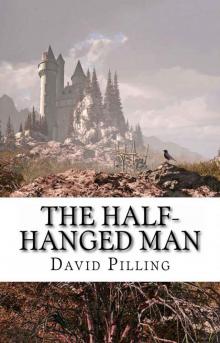 The Half-Hanged Man
The Half-Hanged Man